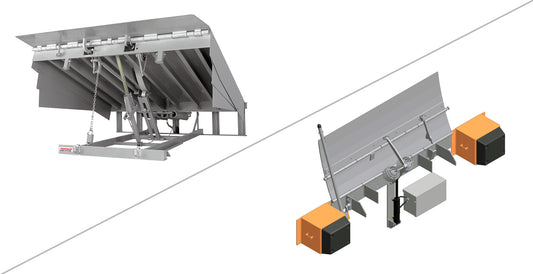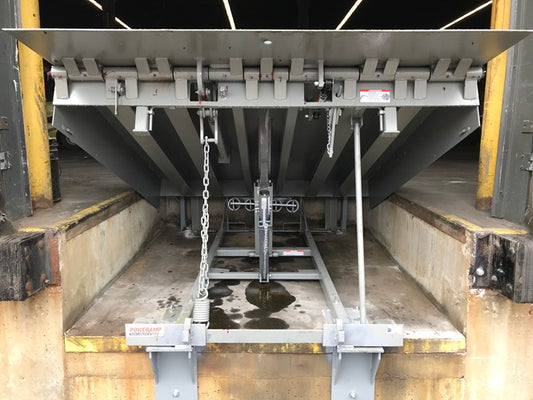Selecting the right loading dock system is crucial for efficient and safe operations in warehouses, distribution centers, and other logistics facilities. A well-designed loading dock can significantly enhance productivity, streamline operations, and ensure the smooth flow of goods. To make an informed decision, consider the following essential factors when choosing a loading dock system.
Project Requirements
At a very basic level, a well-designed loading dock shall consist of a dock leveler, loading dock restraint system or wheel chock, a dock seal or shelter, and dock bumpers. It is a good idea to have a light communication system between dock personnel and drivers to be clear of a dock bay’s status. Beyond the basics, the project scope will help guide decision making.
Evaluate your available space and layout to determine the appropriate type of loading dock system. Consider factors such as the number of docks needed, the size of your facility, the type of vehicles you handle, and the flow of goods. A common rule of thumb is to have 1 dock bay per 10,000 square feet of space. Other considerations include enclosed docks, open docks, and combination docks, each with specific advantages based on your requirements.
Type of Application
The type of equipment most suitable for an application varies based on need. Warehouse dock equipment often include a powered leveler and restraint, a dock shelter, and door barrier for safety and efficiency. For food processing and related facilities, a vertical dock leveler that stores away from the door is idea for cleanliness and efficiency. If a wash-down application is involved, a galvanized finish on your equipment is a good priority. For trucking terminals with many docks serving uniform trailers, an edge-of-dock leveler is most suitable for cost efficiency and energy savings. If more than 5 dock bays are involved, powered equipment is a good idea for easier maintenance and usability.
Adaptability
You should consider the ability of the loading dock system to adapt to future changes in your business operations. Your loading dock should be flexible enough to accommodate different types of vehicles, varying loads, and potential changes in shipping and receiving processes. Look for modular designs that allow for future expansion or modifications as your business grows.
Safety and Security
Prioritize safety measures to protect your personnel and prevent accidents. Trailer locks keep drivers from pulling out at an active dock. Also look for loading dock systems that incorporate safety features such as safety barriers, proper lighting, and audible alarms. Interlocking equipment allows workers to follow a procedure to operate equipment and warns of faults or overrides. Dock monitoring software such as myQ by Systems keeps management in-the-loop on dock activity, maintenance history, and can warn of equipment faults.
Energy Efficiency
Efficiency and sustainability are crucial factors in today's business environment. Look for loading dock systems that prioritize energy efficiency, such as insulated doors, weather seals, and energy-saving dock equipment. This will help reduce energy consumption, lower operational costs, and minimize environmental impact.
Choosing the right loading dock system is a critical decision that can significantly impact the efficiency, safety, and overall productivity of your facility. By considering factors such as space and layout, application, safety and security features, and adaptability, you can make an informed choice that best suits your operational needs. Remember to consult with industry experts and reputable suppliers to ensure you select a loading dock system that meets your specific requirements and enhances your logistics operations.




